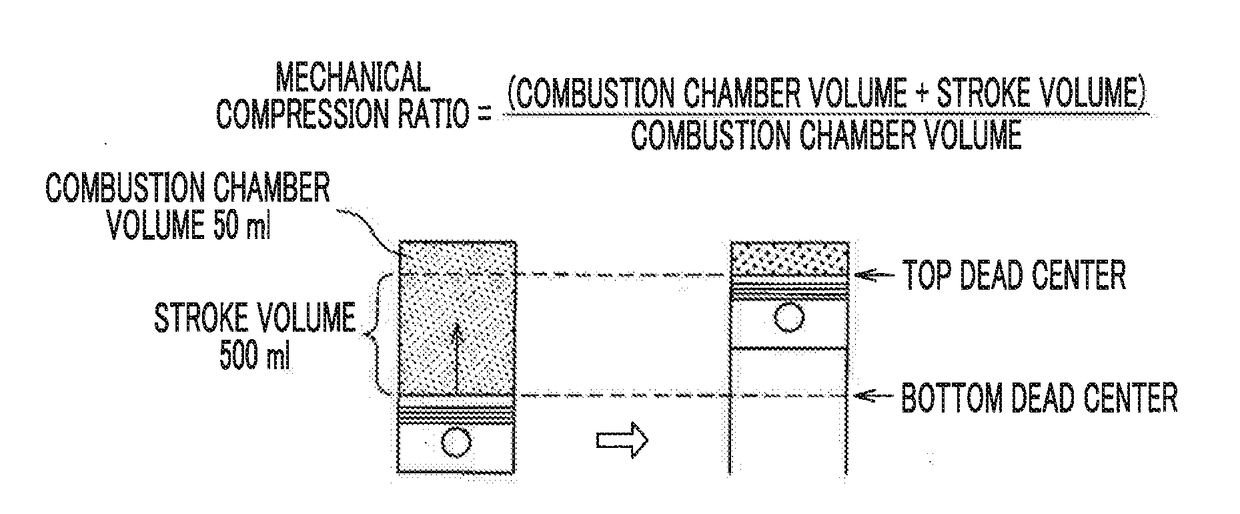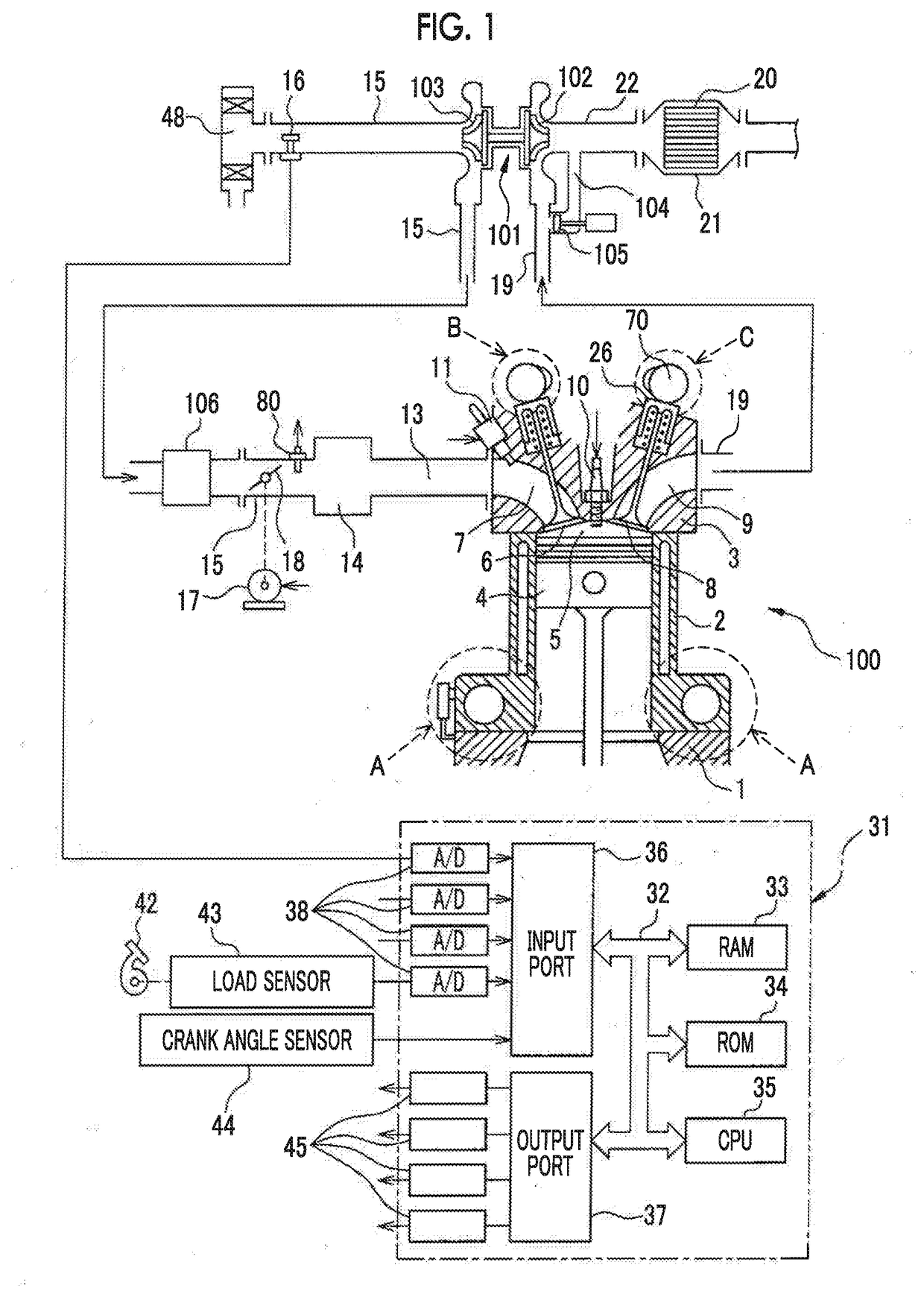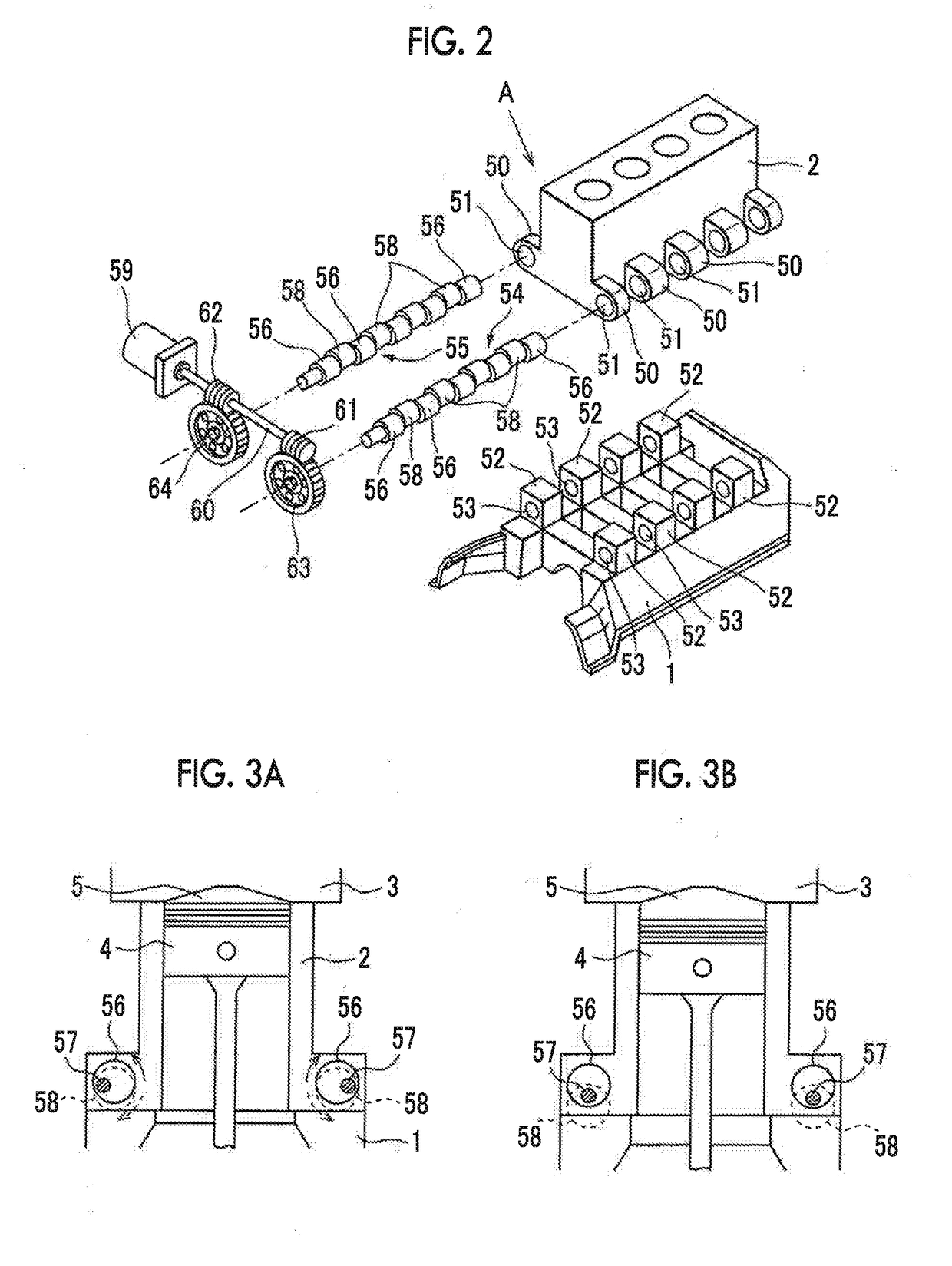Internal combustion engine
- Summary
- Abstract
- Description
- Claims
- Application Information
AI Technical Summary
Benefits of technology
Problems solved by technology
Method used
Image
Examples
first embodiment
[0037]First, a first embodiment will be described with reference to FIGS. 1 to 13.
[0038]Configuration of Internal Combustion Engine
[0039]FIG. 1 is a view schematically illustrating an internal combustion engine 100 related to a first embodiment. In the first embodiment, the internal combustion engine 100 is a spark-ignition type internal combustion engine (gasoline engine). The internal combustion engine 100 is mounted on a vehicle. The internal combustion engine 100 includes a crankcase 1, a cylinder block 2, and a cylinder head 3. A piston 4 that reciprocates inside the cylinder block 2 is disposed inside the cylinder block 2. The internal combustion engine 100 has a plurality of cylinders. In the first embodiment, the number of cylinders is four.
[0040]A combustion chamber 5 is formed between the piston 4 and the cylinder head 3 for each cylinder. An intake port 7 and an exhaust port 9 are formed in the cylinder head 3. The intake port 7 and the exhaust port 9 are connected to the...
second embodiment
[0113]The configuration and control of an internal combustion engine related to a second embodiment are basically the same as those of the internal combustion engine related to the first embodiment except for the points to be described below. For this reason, the second embodiment will be described below, mainly regarding the parts different from the first embodiment.
[0114]In the second embodiment, similar to the first embodiment, the electronic control unit of the internal combustion engine 100 calculates the steady valve closing timing IVCs and the transient valve closing timing IVCt, and calculates the target valve closing timing based on the steady valve closing timing IVCs and the transient valve closing timing IVCt. Unlike the first embodiment, the electronic control unit calculates the target mechanical compression ratio based on the target valve closing timing.
[0115]FIG. 14 is a flowchart illustrating the control in the second embodiment. A control routine of FIG. 14 is repe...
third embodiment
[0120]The configuration and control of an internal combustion engine related to a third embodiment are basically the same as those of the internal combustion engine related to the first embodiment except for the points to be described below. For this reason, the third embodiment will be described below mainly regarding the parts different from the first embodiment.
[0121]In the third embodiment, the electronic control unit of the internal combustion engine 100 sets the target valve closing timing TIVC to the transient valve closing timing IVCt when a difference between the transient valve closing timing IVCt and the steady valve closing timing IVCs becomes equal to or more than a first reference value, and switches the target valve closing timing TIVC from the transient valve closing timing IVCt to the steady valve closing timing IVCs when the difference between the transient valve closing timing IVCt and the steady valve closing timing IVCs becomes equal to or less than a second ref...
PUM
 Login to View More
Login to View More Abstract
Description
Claims
Application Information
 Login to View More
Login to View More - R&D
- Intellectual Property
- Life Sciences
- Materials
- Tech Scout
- Unparalleled Data Quality
- Higher Quality Content
- 60% Fewer Hallucinations
Browse by: Latest US Patents, China's latest patents, Technical Efficacy Thesaurus, Application Domain, Technology Topic, Popular Technical Reports.
© 2025 PatSnap. All rights reserved.Legal|Privacy policy|Modern Slavery Act Transparency Statement|Sitemap|About US| Contact US: help@patsnap.com



